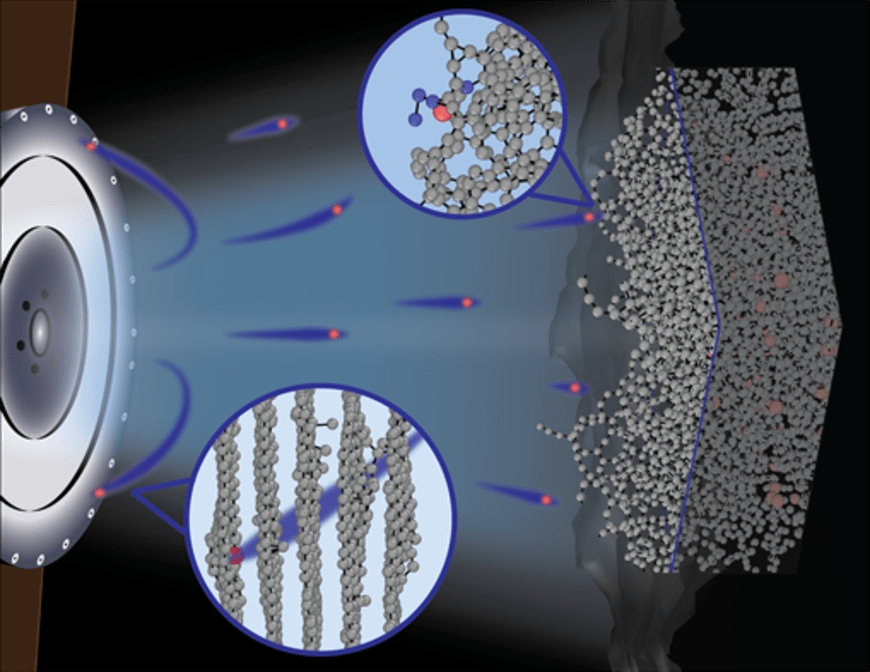We reach more than 65,000 registered users in Dec!! Register Now

New research computes first step toward predicting lifespan of electric space propulsion systems
- February 04, 2023
- 24 Views
- 0 Likes
- 0 Comment
Electric space propulsion systems use energized atoms to generate thrust. The high-speed beams of ions bump against the graphite surfaces of the thruster, eroding them a little more with each hit, and are the systems' primary lifetime-limiting factor. When ion thrusters are ground tested in an enclosed chamber, the ricocheting particles of carbon from the graphite chamber walls can also redeposit back onto the thruster surfaces. This changes the measured performance characteristics of the thruster.
Researchers at the University of Illinois Urbana-Champaign used data from low-pressure chamber experiments and large-scale computations to develop a model to better understand the effects of ion erosion on carbon surfaces —the first step in predicting its failure.
“We need an accurate assessment of the ion erosion rate on graphite to predict thruster life, but testing facilities have reported varying sputtering rates, leading to large uncertainties in predictions,” said Huy Tran, a Ph.D. student in the Department of Aerospace Engineering at UIUC.
Tran said it is difficult to replicate the environment of space in a laboratory chamber because it is difficult to construct a sufficiently large chamber to avoid ion-surface interactions at the chamber walls. And although graphite is typically used for the accelerator grid and pole covers in the thruster, there isn’t agreement on which type of graphite is most resistant to erosion, known as sputtering.
The simulation resolved the limitations and uncertainties in the experimental data and the researchers gained insight into a critical phenomenon.
“Whether it is pyrolytic graphite on the grided ion optics, isotropic graphite on the pole covers, or poco graphite or anisotropic graphite on the chamber walls, our molecular dynamics simulations show that the sputtering rates and mechanisms are identical across all these different referenced structures,” said Huck Beng Chew, Tran’s adviser.
He said the sputtering process creates a unique carbon structure during the bombardment process. ">Watch a video of the simulation showing a close-up view of the xenon ion traveling at hypersonic velocity, impacting the carbon structure.
“When the ions come and damage the surface, they transform the surface into an amorphous-like structure regardless of the initial carbon structure,” Chew said. “You end up with a sputtered surface with the same unique structural characteristics. This is one of the main findings that we have observed from our simulations.”
“The model we developed bridges the molecular dynamics simulation results to the experimental data,” Chew said. “The next thing we want to look at is the evolving surface morphology over time as you put more and more xenon ions into the system. This is relevant to ion thrusters for deep space exploration.”
The research is part of a NASA center known as the Joint Advanced Propulsion Institute which includes researchers at nine universities, including UIUC aerospace engineering faculties Chew, Debbie Levin, and Joshua Rovey who leads the Illinois team.
The simulations were performed using NCSA’s Delta, a supercomputing facility at Illinois
List of Referenes
- H. Tran, H.B. Chew. Surface morphology and carbon structure effects on sputtering: Bridging scales between molecular dynamics simulations and experiments. Carbon, 2023; 205: 180 DOI: 10.1016/j.carbon.2023.01.015
Cite This Article as
No tags found for this post









